The future of museums will be increasingly transmedia. We have addressed the topic of transmediality in museums several times in this magazine, with articles by museologist Sandro Debono (such as the one on the “museum pandemic” that developed the topic by suggesting how museums might become more transmedia), and it is interesting to observe how several institutions, even in Italy, more or less consciously are moving toward this direction. The concept of “transmediality” was coined by American media scholar Henry Jenkins, who in his well-known 2006 essay(Convergence culture. Where old and new media collide, translated in Italy in 2007) explained that “a story is transmedia when it unfolds across multiple media platforms, where each new text makes a distinctive and valuable contribution to the whole system.” Transmediality is, in short, the ability to create a narrative universe around the museum, which is developed across multiple platforms. A museum, therefore, will reach its audience through different channels: website, publications, documentaries, comics, videos, social media presence, advertising in traditional media, apps and more.
The dpcm of last November 3 closed places of culture throughout Italy, without making any distinction based on the epidemiological situation of individual territories. Museums (as well as libraries, archives, cinemas, and theaters) have therefore once again found themselves mired in a difficult impasse, to which we have returned several times on these pages as well: and at such a juncture one of the main priorities of museums is not to lose contact with the public. Communication media (and not only digital, as we shall see) are therefore a compulsory choice: it should be stressed that for museums, digital and, in general, communication aimed at the public are not diversions or, even worse, alternatives to the actual visit. No one believes that digital is a substitute for the live experience, as many might mistakenly think witnessing theexplosion of digital cultural content that has been with us since March. If anything, it is a need that responds to several objectives, chief among them the attempt to understand what relevance the museum has for its community and, in general, for its target audiences, and the search for closer and deeper contact with its audiences.
Several institutions have therefore realized that digital is not an emergency means of closure, but is a useful tool for working toward reopening. We are witnessing, in recent weeks, a phenomenon very similar to that which occurred during the summer, when, after reopening, museums sought different, innovative and never-before-tried ways to win back audiences (a large part of which, very understandably, harbors a certain distrust of indoor venues: we must then reflect on the fact that a large portion of museum audiences are visitors over 65 years of age) and to acquire new ones. This has been discussed here as well: there have been museums that have organized outdoor concerts or activities, others that have initiated theater festivals, those that have turned into movie theaters, and those that, adapting to the situation, have thought of going out to meet their audiences by inventing alternative or tailor-made visiting experiences. The same is happening in these weeks: the second confinement that has hit museums has prompted many to adapt, looking for new ways to communicate museums, sometimes applying transmedia, in order to reach audiences in a more capillary way.
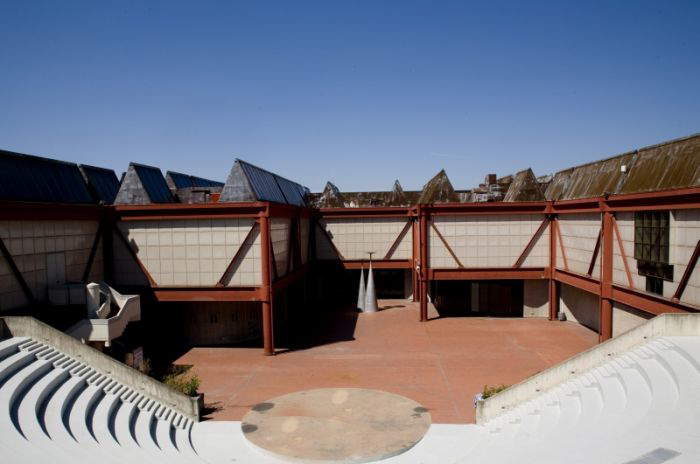 |
| The theater at the Pecci Center in Prato, which has been the site of several concerts this summer |
 |
| A concert at the cloisters of San Pietro in Reggio Emilia |
In some cases, museums have simply activated the more “traditional” channels of digital communication, but they have done so organically, with serious projects and adequate programming, with many again trying to bet on one of the cornerstones of the relationship between museums and audiences during the pandemic: attention to local communities. Many experts, observers, and insiders have reiterated that, for a long time, museum audiences will be primarily local audiences, since, at least for the next few months, it will be unthinkable to reach the tourist flows of the pre-Covid period (which will come back into view when the pandemic is over: we will have to wait optimistically for next summer, realistically for 2022), and focusing on audiences in one’s own city and area, or stimulating a more robust outreach tourism, will be a requirement for everyone. Among those, therefore, who are planning very well on the online are the Pecci Center in Prato, already the author of a busy summer schedule, which for the fall has given birth to an online schedule, Pecci On, divided into two parts: #Museum2B, a series of meetings that brings together personalities in the field (museum directors, curators, professionals) who will reflect on the role of the museum nowadays, and KeyWords, a format that brings together art and psychology. That’s not all: the Pecci is also being transformed into a streaming cinema, with three screenings a day (for a fee), as well as a platform for encounters, as on Thursdays, with #PecciBooks, book presentations are offered and with #PecciArtistTalk there will be conversations with artists instead.
The Uffizi is also standing out in recent months, obviously not only because of Chiara Ferragni’s well-known photo campaign, which is only the tip of theiceberg of what the museum is doing (which, by the way, in the case of the photo shoot of the well-known influencer, did nothing more than exploit to its advantage the media wave of a famous person who went to the museum behind closed doors to shoot an advertisement, exactly as so many other subjects do in many museums around the world). The Uffizi has worked very well on online, landing on all social media by adopting a different language for each one (Facebook for live broadcasts and small targeted insights, Instagram with micro-pillages about the works, Twitter very focused on the latest events and much shifted to the international audience, TikTok with short ironic and lighthearted videos to try to reach a younger audience) and also started a live program, Uffizi on air: on the one hand live videos specially made for social channels, broadcast on the Facebook profile on Tuesdays and Fridays, and on the other hand an idea that might appear to be of staggering banality, but which very few actually put into practice, namely live streaming of events held live. The Uffizi has decided to activate it for the traditional “Wednesdays of the Uffizi,” the meetings that have been held on Wednesdays for years and in which relevant issues of art and culture are addressed, often by presenting new discoveries or unpublished points of view. It’s a good practice that will hopefully be able to continue even when the pandemic is over: one of the few positives of Covid has been that it has brought online many interesting meetings that previously could only be followed by physically going there (think of the benefits for those who have to travel, and also the benefits the museum gets by reaching a wider audience).
And still thinking about the more “traditional” means of digital communication, it is worth noting the projects of the Galleria dell’Accademia in Florence and the Paestum Archaeological Park, which have focused on their own works. The Florentine museum activated an important collaboration with the company Haltadefinizione, which has been working for years in the field of technologies for cultural heritage (it is one of Italy’simaging excellences), to subject some of the most important works in the collection to a high-definition image acquisition campaign, with the result that seventy-five masterpieces can be down to the smallest details, with spectacular enlargements: in an overall panorama where, in 2020, it is still difficult to find good images of works preserved in different museums on the web, this is an achievement to be welcomed. Paestum has worked in the same way, bringing its heritage online, thanks to the new digital catalog, Sistema Hera, which is open to the public, who can consult catalog information, archival documents, monumental heritage, and also recreate the contextual link of the finds with the places of discovery, with the investigations that brought them to light, with their documentation.
 |
| The Uffizi Gallery |
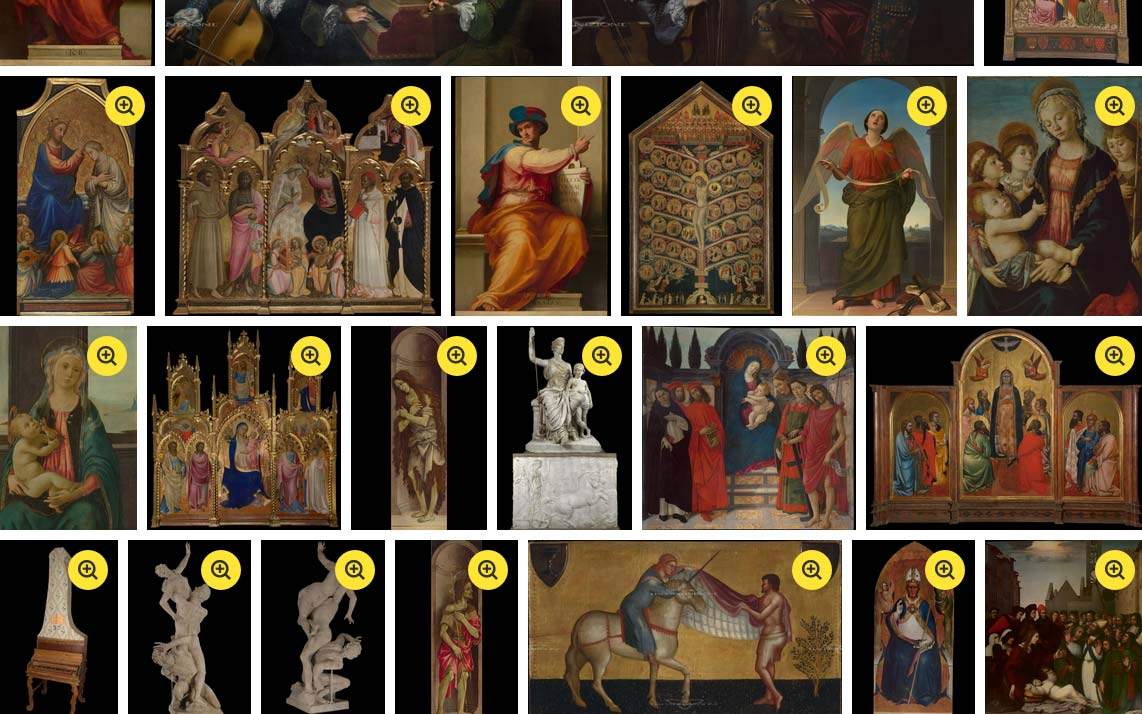 |
| The masterpieces of the Accademia Gallery in Florence in HD |
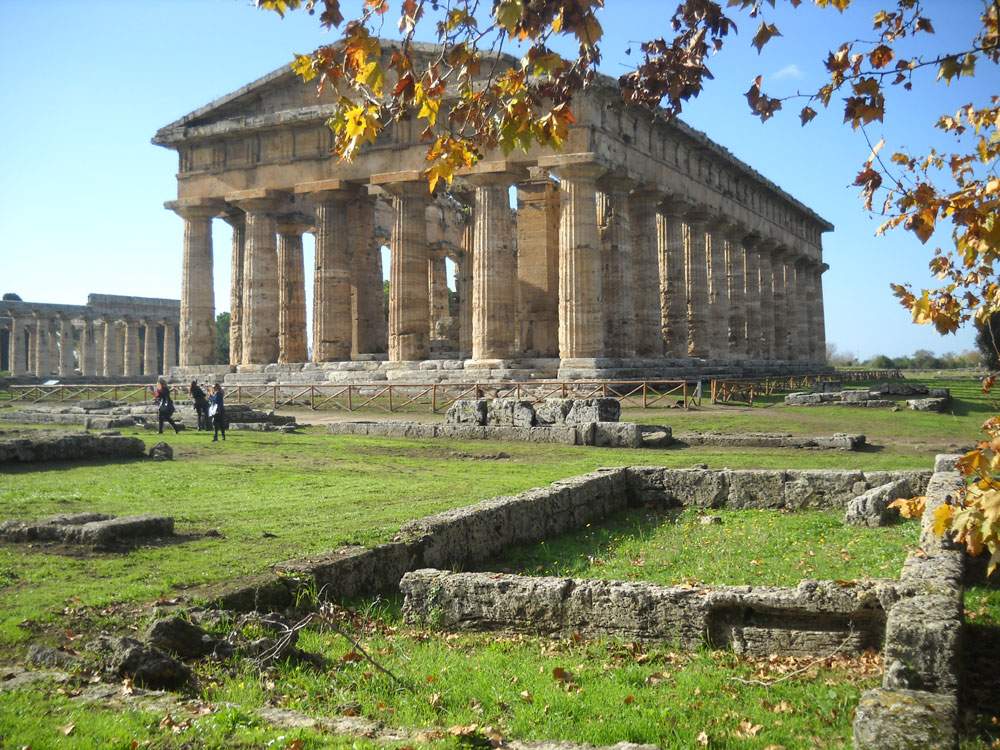 |
| The Archaeological Park of Paestum |
Turning instead to the less predictable modes, museums that have offered online courses have achieved great success. Not many museums have thought of this, but for those that have presented this type of offer to the public, the result has been almost the same for all: an immediate success with the public. In Venice, the Guggenheim Collection has launched L’arte è vita (Art is Life), an art history course with Alessandra Montalbetti of the Pinacoteca di Brera, divided into two cycles of four lectures each, organized on the Zoom platform, reserved for museum members (although one can join at any time, moreover with a 30 percent discount on the annual fee if one decides to do so by December 31), and accessed with a 50-euro tax-deductible donation. Classes address thematic topics by exploring connections between art and other fields of knowledge: alchemy, advertising, music, food, literature, fashion, philosophy, and film.
More “traditional” instead was the course at the Diocesan Museum of Milan, which in October launched La lunga scia della bellezza (The Long Trail of Beauty), an art history course focused on the seventeenth and eighteenth centuries with the famous art historian and popularizer Stefano Zuffi, who in each lesson offered monographic insights on individual artists, in chronological order (Vermeer, Guido Reni, the eighteenth century, Vedutism, Tiepolo, Goya and Canova). In this case, the museum has decided on a different payment method: not a single fee for a cycle of lectures, but one for each individual lecture (10 euros each). Finally, of note is the experiment of the Galleria d’Arte Moderna e Contemporanea (GAMeC) in Bergamo, which from November 28 will start Aula Magna. Art, Citizenship and the Constitution, a singular course on art and civic education, with a very original format: every Saturday, a different expert will start from a work of art exhibited at the Ti Bergamo - A Community exhibition to address civic education issues (e.g., the right to culture and access to online education, environmental law, gender inequality, solidarity and the welfare state, the right to health, and so on).
Finally, there are museums that have finally decided to pursue other equally innovative paths. There is, for example, the Magnani Foundation in Reggio Emilia, which wanted to resort to an even more traditional medium: the telephone. And in a sort of re-edition of Gianni Rodari’s Fables on the Phone (especially since 2020 marks the centenary of the birth of the great children’s writer), this fall the Reggio Emilia museum is offering the... works on the phone. The initiative is titled, precisely, Works on the Phone and, from November 11 to December 23, allows the public to be told over the phone, by the museum staff, about a work of their choice among those on display at the True Fictions exhibition: simply call Palazzo Magnani on its number, and an expert will answer, with whom you can engage in a discussion about your favorite work. This is an experience that, at least to our recollection, is new to Italy, but not by any means: it was launched during the spring confinement by a Dutch museum, the LAM Museum in Lisse, which kept its audience company with a similar service, titled Viewphone: there, too, it was possible to call the museum and talk about art with all the institution’s employees (the director, the conservator, the bookshop staff, the cleaning staff). The concept is disarmingly simple: since, when the museum is open, we are used to talking verbally with people, during the closure we intend to do the same.
And again, another museum harnessing the potential of audio is MAXXI in Rome, which is doing so with its Collezione da ascoltare project, which started during the so-called spring lockdown and restarted this fall: in this new edition, four actors (Sonia Bergamasco, Luigi Lo Cascio, Isabella Ragonese and Luca Zingaretti) and a writer (Michela Murgia) have given “voice” to five iconic works in the museum, reading texts drafted by MAXXI’s Sofia Bilotta in collaboration with Rosella Frittelli and Luciano Pulerà, blind participants in MAXXI’s public engagement programs. The audiodescriptions are released weekly, starting November 15, and last about five minutes each. Also for the spring edition had participated well-known votes in cinema, entertainment and culture, such as Paola Cortellesi, Fabrizio Gifuni, Neri Marcorè, Pif. A sort of different declination of the classic audioguide: an idea certainly not new, but always much appreciated.
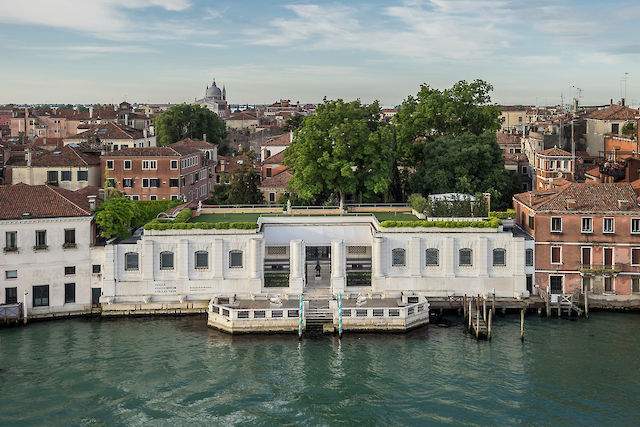 |
| The Peggy Guggenheim Collection. Photo by Matteo De Fina |
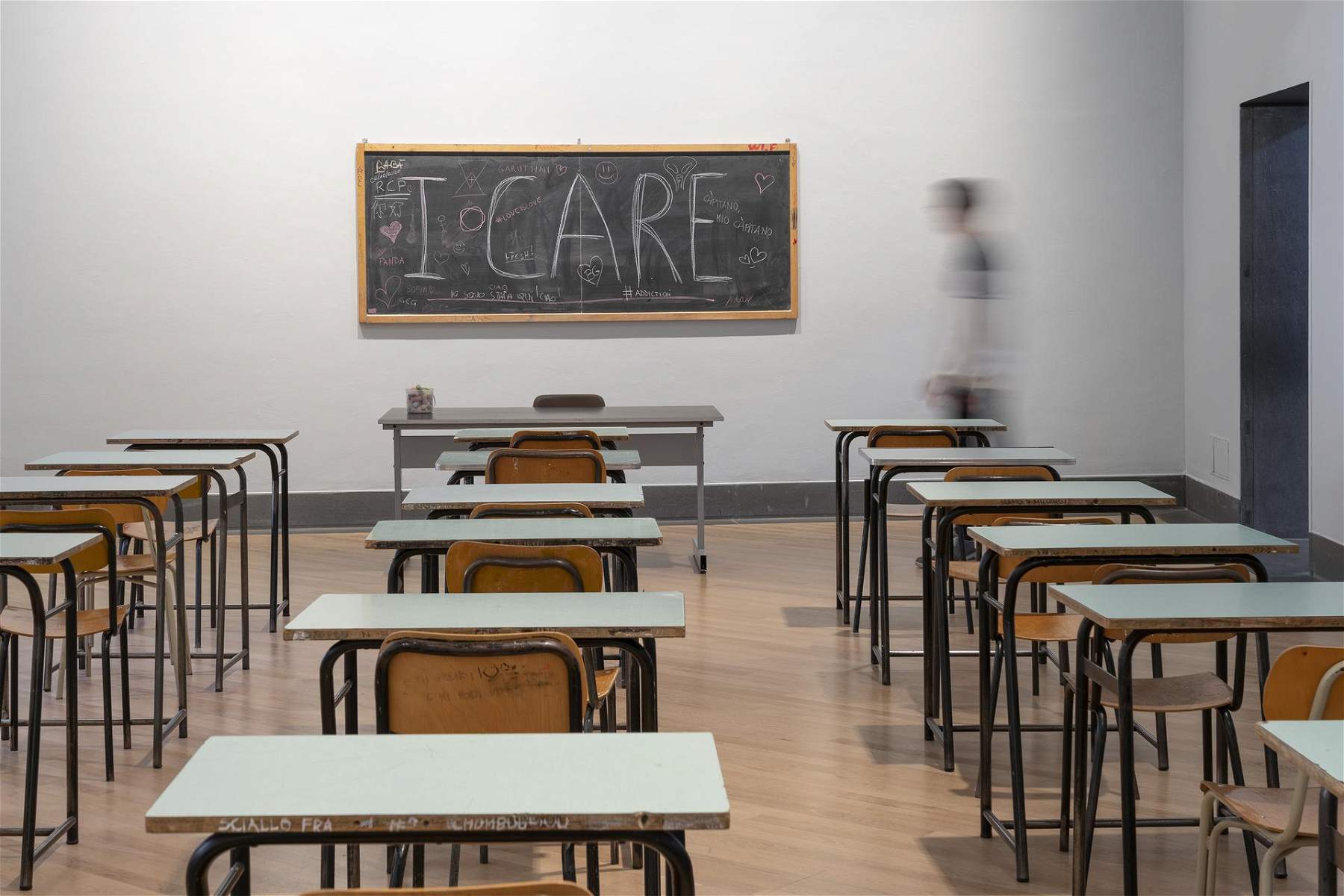 |
| The room dedicated to the Aula Magna project within the Ti Bergamo - Una comunità exhibition. Ph. Credit Lorenzo Palmieri |
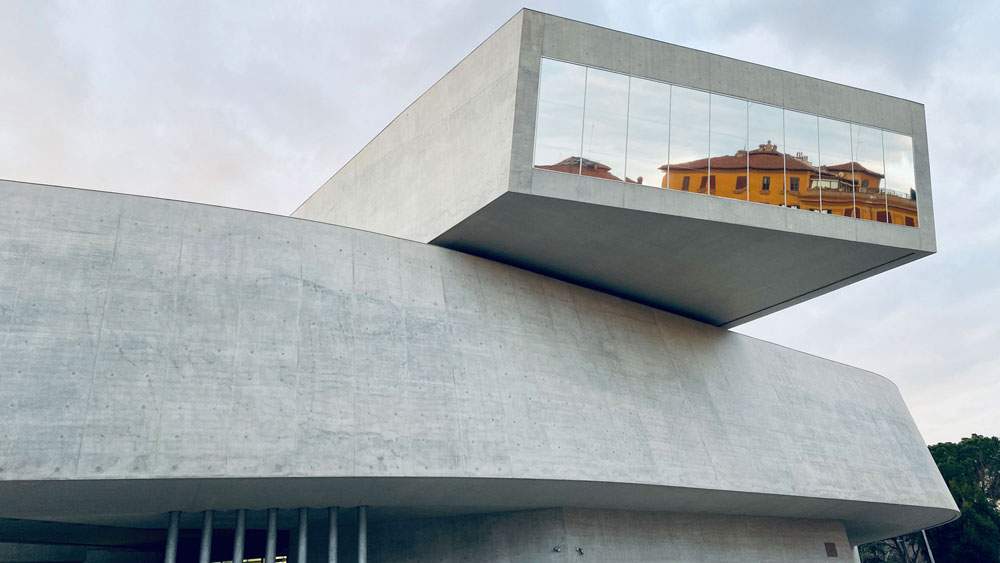 |
| The MAXXI in Rome. |
Underlying these projects is the idea that the museum is not a crystallized institution, speaking from a pedestal in a single way, with a single voice, or with a, as they say, top-down approach: even a museum can be a whole universe composed of several worlds, naturally connected to each other, but not necessarily communicating the same topics, in the same way, to the same audiences. Indeed, it should be emphasized that there is no “one” audience: the audiences could be diverse and reachable by the most varied means, perhaps even far from the most traditional sensibilities, but always with the aim of connecting the museum to the people. It will be worth mentioning, for example, the case of the Musée d’Orsay, which in recent weeks has managed to reach thousands of people thanks to an emotional short film shared through social media and much appreciated by the network audience: it is a language that may not be liked by many, but it is certainly not trivialization either (it is at most a vehicle that will serve to transport new and old audiences to the more in-depth content).
Museums, in conclusion, are closed but they are not standing still, and if a silver lining is to be found in the closures (certainly painful and economically damaging), it will be found in this commendable dynamism that is sweeping across the museum landscape and that has led many museums to try and experiment all the time, without standing still and observing, with the idea that the museum, too, is a portion of society and participates daily in the life of its community.
Warning: the translation into English of the original Italian article was created using automatic tools. We undertake to review all articles, but we do not guarantee the total absence of inaccuracies in the translation due to the program. You can find the original by clicking on the ITA button. If you find any mistake,please contact us.